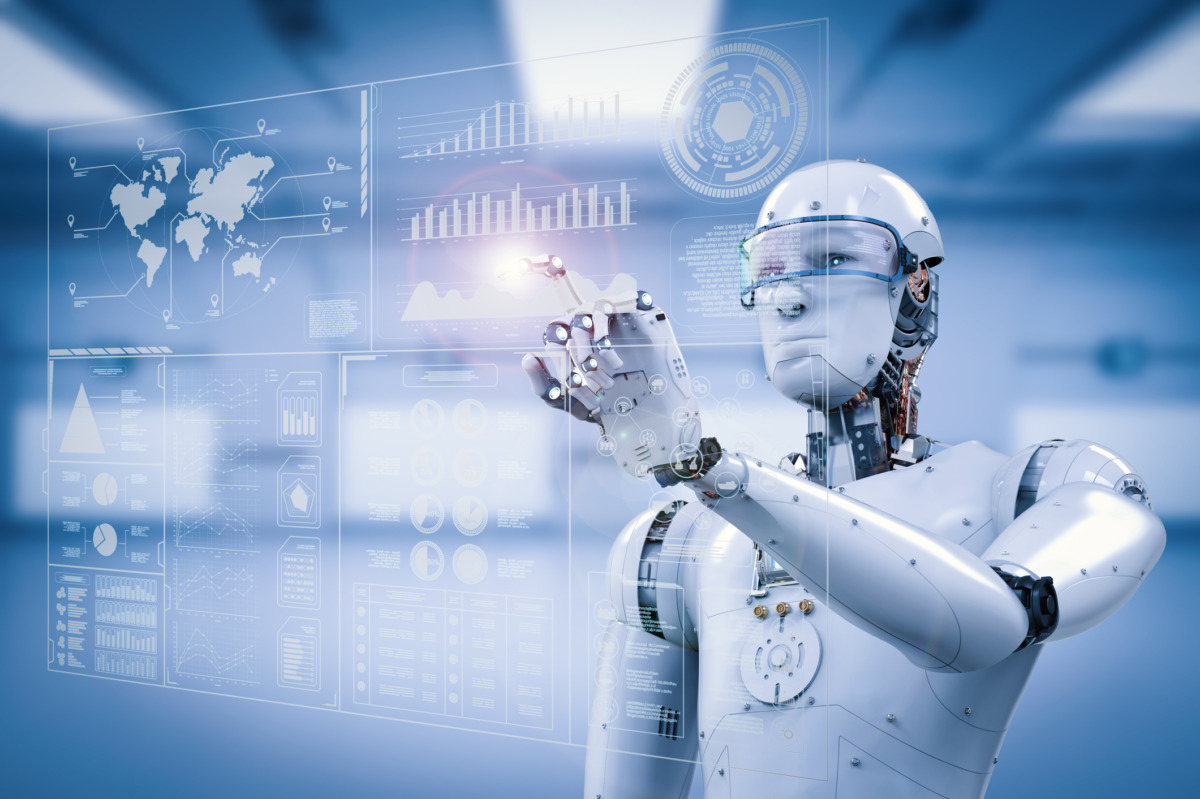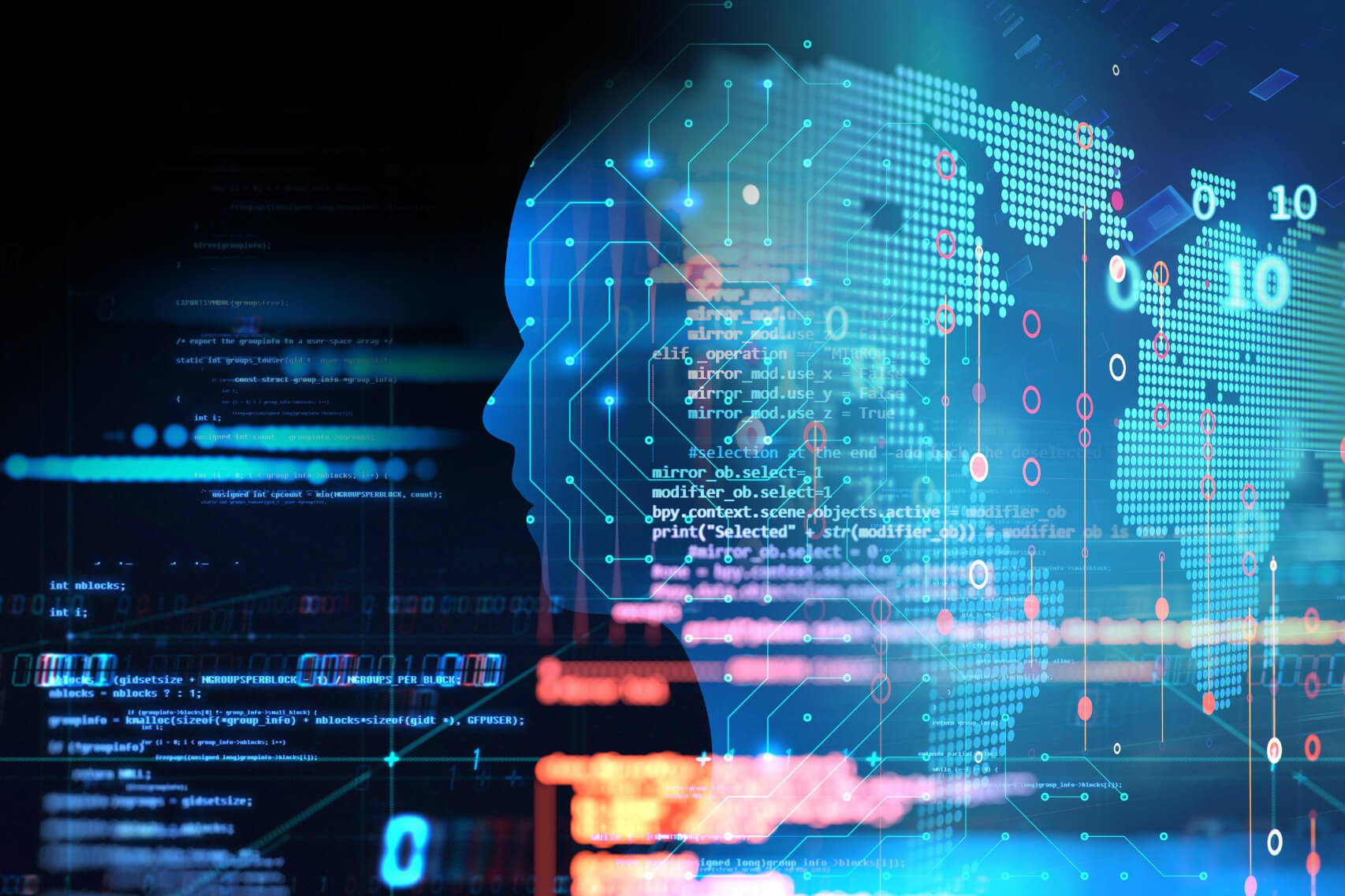Ever since the dawn of mankind’s lore and the development of imaginative abilities, the desire to create an imitation of thinking in the form of a construct replicating human intelligence for the purpose of acting as an assistant has been traceable in all manner of works of art and literature.
From golden droid workers helping Hephaestus in his forge to the infamous Golem, the imitation of thinking life has driven human imagination and pushed inventors ever further into the realm we now know as Artificial Intelligence.
But it was not until the 1950s that room-sized computers paved the way for programming and the first attempts at replicating both artificial intelligence constructs and neural networks were made possible.
As the economy has taken a chokehold over virtually every area of human activity, approving or shooting down inventions and innovations through the prism of profitability, AI has also treaded the path of judgment by return on investment.
And now AI has settled its aims on the financial sector, morphing into a completely new term known as fintech. Banking, trading and investments are the new areas that AI is about to call home in the coming years.
AI is Coming

The main reasons why AI has settled in the financial sector is largely thanks to the simple fact that the technology is best suited for dealing with massive amounts of data and doing what it was conceived for since time immemorial – helping the human mind cope with tasks the latter is biologically limited in.
The financial sector entails vast amounts of data that need to processed and analyzed to extract meaningful information that can be used to make a profit. And this is the main area where AI can assist by being programmed to derive and extract results or trends as a predictive instrument from the arrays of data passing through financial infrastructures.
Naturally, as is the case with every technology, AI has passed through major cycles of development and consequent lulls born of disillusionment or financial crises.
The most recent “winter” cycle landed on the 1990s and continued to recent years, until the global economy fully recovered to embrace new technologies and achieved a breakthrough in innovations. The corollary technologies of AI have been at the spearhead of this movement and have seen numerous applications.
AI as Fintech: How Has AI Changed Fintech?
The first and most palpable manifestation of AI can be witnessed in the advent of bots.
Anyone who has ever entered an internet shop and conversed with an online assistant is likely to have chatted with a bot. A study from Statista showed that the number of consumers using virtual assistants worldwide was expected to exceed one billion in 2018.
The word “optimization” in economic terminology means two things molded into one – reduction or costs and increases in productivity. The result is the laying off of employees through the introduction of bots, or rather simple AI builds that can be programmed to perform simple tasks, such as answering client queries through a series of pre-programmed algorithms.
Such bots are capable of simultaneously answering multiple requests and leading to sales, something that human managers are incapable of doing on such a scale. Bots have permeated greatly into various industries, from online trade to banking, where they have already replaced a great layer of middle-line managers.
Sberbank, Russia’s leading financial giant, has recently announced that AI solutions have reduced up to 90% of middle-line staff and resulted in a reduction of client visits to branches by up to 5 million in 2018. A substantial cost saving achievement.
Predictive analysis is another immense application for AI technologies that has recently made its way onto the financial scene.
NASDAQ started employing AI on its trading floor in 2018, and the NASDQ CTA Artificial Intelligence and Robotics Index (NQROBO) outperformed its rivals the ROBO Global Robotics and Automation Index and the Indxx Global Robotics & Artificial Intelligence Thematic Index (IBOTZ) by 5.3% vs 0.19% and 2.71% respectively.
Using AI for analyzing potential graph movements is becoming a viable and considerably more profitable alternative to maintaining a massive staff of analysts, who will never be able to process the amounts of information an AI can in seconds.
At the same time, the Swiss UBS bank, which is ranked 35 in the world for its volume of assets, has recently partnered with Amazon to incorporate its “Ask UBS” service into Alexa-powered Echo speaker devices.
Money trading is the next big thing for AI as using a combination of predicative analysis and bots to peek into the future on the basis of data aggregated from the internet about potential market movements is an invaluable tool for traders.
Specialized AI can summarize massive amounts of data from social networks and news channels to formulate a forecast about any currency’s exchange rate. And that is an instrument that is being actively employed by both major trading floors and smaller financial startups.
GAN or Generative Adversarial Networks are one of the biggest trends of the coming years.
GANs were invented by Ian Goodfellow in 2014, and are comprised of two Neural Networks in the form of a discriminator and generator that can to classify any form of data between themselves and reach equilibrium in the form of a consensus when the generator produces photos indistinguishable from real data.
In other words, GANs can be trained in an unlimited manner and can learn non-stop. This is fantastic news for fintech as the industry will be able to teach these networks individually to form realistic market behavior, thus becoming a heaven-sent instrument for anyone from traders to risk managers.
Trends in the Future Use of AI

Alongside GANs, the most visible manifestations of AI in fintech in the coming years will be focused not so much on innovation, but on application. The greatest trends lie in the use of AI in security, personalization and process optimization.
Banking and financial industries in general have been plagued by security issues over the years and AI is one of the instruments that seems most capable of redeeming the multiple loopholes left in the system. The use of biometric data, like fingerprints and retinal patterns for client identification is one of the areas that can apply AI along with facial recognition technologies that are being employed by Apple in its phones for its Apple Pay services.
A recent report by Goode Intelligence claims that 1.9 billion bank customers will be using biometric identification in one form or the other by 2021. Fraud is one of the key areas that AI can eliminate if properly applied in fraud-prevention departments.
The personalization of user experiences with banks is a major challenge for the industry in general as clients are becoming more demanding, capricious, tech-savvy and advanced in their financial literacy. Customization and personalization of user experiences cannot be conceived without the use of AI, as the latter is the key to predicting user requests and catering to them before the client even knows what they might need in the future.
By relying on the analysis of client behavior, the AI can become a powerful advertising tool for financial instruments and products.
Needless to say, optimization of internal and client-management processes is one of the key areas that AI will be applied for in the coming years as organizations struggle to reduce costs and streamline workflows. Just as bots can now handle client queries in online shops, similar constructs tailored to financial sectors can cater to clients and reduce the amount of paperwork involved in handling requests.
In a more in-house sense of the application, JPMorgan started using AI-based constructs to process internal IT requests, such as employee manipulations with key bank systems. JPMorgan Chase has recently introduced a Contract Intelligence (COiN) platform designed to analyze legal documents and extract important data points and clauses.
Since the manual review of around 12,000 annual commercial credit agreements and relevant documents requires approximately 360,000 man-hours, the use of AI that can handle the task in a few hours is more than justified.
Applicability: Who Benefits from the Use of AI and How?
Not a single technology can ever become truly profitable unless it proves its worth and usefulness before the average user. But in the financial sector, the average user is a threefold sense of the word that involves clients, investors and startups.
For the client side of the financial sector, the application of AI technologies can mean only one thing in the sense of benefit – convenience. Convenience for clients involves greater security, higher personalization of services, faster servicing and higher profitability. The combination of these boons can be achieved through the application of AI, and its profitability will be assured by cost reductions on personnel.
Certainly, reducing staff is a thing that society frowns upon, but clients are eager to look past the woes of the laid off in favor of their convenience in interaction with banks and the ability to receive better services under the umbrella of greater protection of their passwords and personal data.
For instance, the Bank of America Corporation recently unveiled its intelligent virtual assistant named Erica, which uses predictive analytics and cognitive messaging to provide financial guidance to the organization’s over 45 million clients.
But it is the investors, such as institutional investors and traders who are the most attractive clients of any banking organization, and AI is the holy grail when speaking of the development of such directions.
From offering trading bots to massive data analysis and prediction to handling vast arrays of client data with financial results backing them up, the technology can work wonders in multiplying value for clients. As value largely translates into profits in the case of investors, the use of AI in analyzing optimal investment opportunities and offering greater convenience in servicing is promising.
Last but not least, startups that form the backbone of market development, can benefit greatly from the application of AI.
As competition is a healthy phenomenon that drives progress, the free availability of AI technologies and the presence of a large number of supporting databases makes the development of AI constructs to cater to market needs a profitable venture.
As the AI and neural networks market is largely dominated by giants like Amazon, Google and IBM, the presence of smaller startups capable of offering high value products similar to those offered by the dominators but with better features and, most importantly, at lower costs, makes the AI market a lucrative and largely untapped vastness full of opportunities.
Final Thoughts

The fintech revolution with the application of AI is still only emerging, but has already made a significant impression on the entire industry.
The proven economic feasibility and efficiency offered by the systems and their derivatives is driving industry leaders to invest in the development of newer technologies in search of greater profits and optimization. The market of AI solutions is ripe with opportunities and the global trend of their application in one way or another is stemming from the world’s financial centers in New York, where the trendsetters of the financial sector are investing in new instruments to revolutionize the industry.
A report by CB Insights indicates that the first quarter of 2018 alone saw a record-breaking $5.4 billion raised by fintech companies backed by venture capital – ample proof that institutional investors see the promise of returns in developing new technologies to cater to the massive market of financial services.
Banks are not lagging behind as achieving customer-service automation, personalization, improved security, process optimization and pattern recognition will ensure their competitive advantage over other organizations that have not yet embraced the idea of innovation.
Since the financial market is just as brutally competitive as any other that involves massive amounts of money, the ones who follow and embrace trends will end up surviving and triumphing on the bones of archaic thinking as the technological revolution sweeps across the global economy on the wings of AI.
Contributed by Ivan Aleksandrov
Ivan Aleksandrov is the Managing Partner at Memorandum.Capital, an international investment company focused on blockchain-based assets. Their expertise in Venture Capital, Private Equity and Investment Banking allows them to provide exemplary services to their clients and great opportunities for investment attraction.

